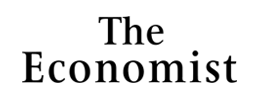Related

Ricardo Hausmann on Land Use Policies & the Persistence of the Informal Economy
Edward Glaeser on Promoting Urban Entrepreneurship in NYC
Chen Jinyong on Reforming China's Hukou System
Robert Pindyck's Carbon Pricing Analysis
Stephen Smith on Housing Subsidies for Six Figure Earners in NYC
Please fill out the information below to receive our e-newsletter(s).
*Indicates required.